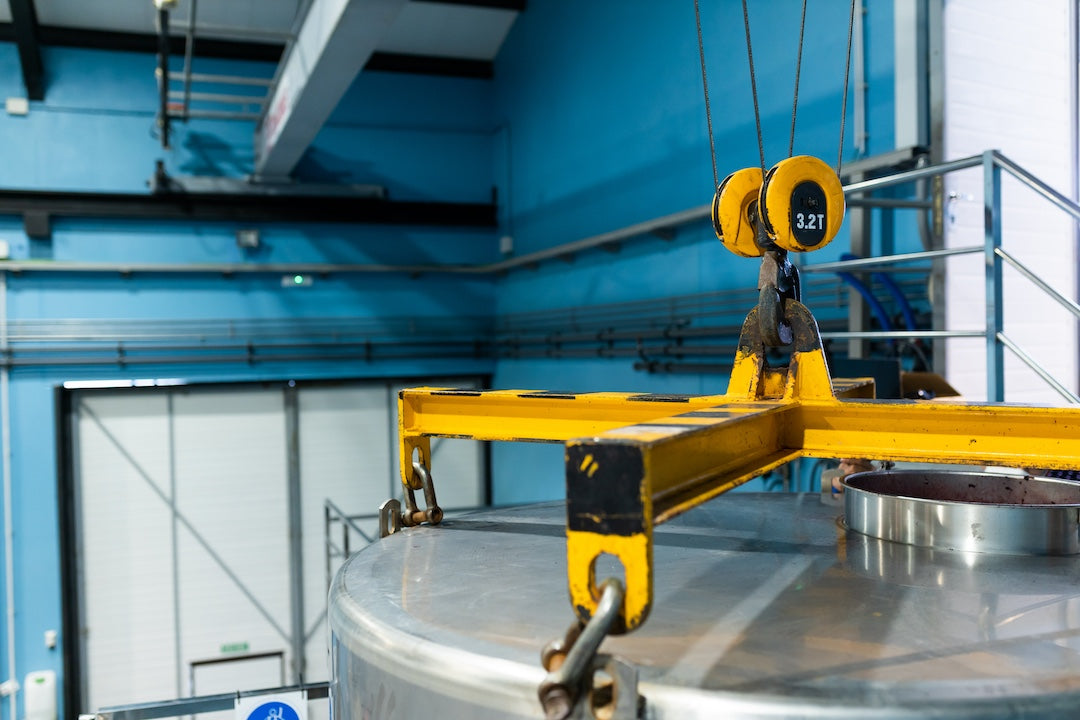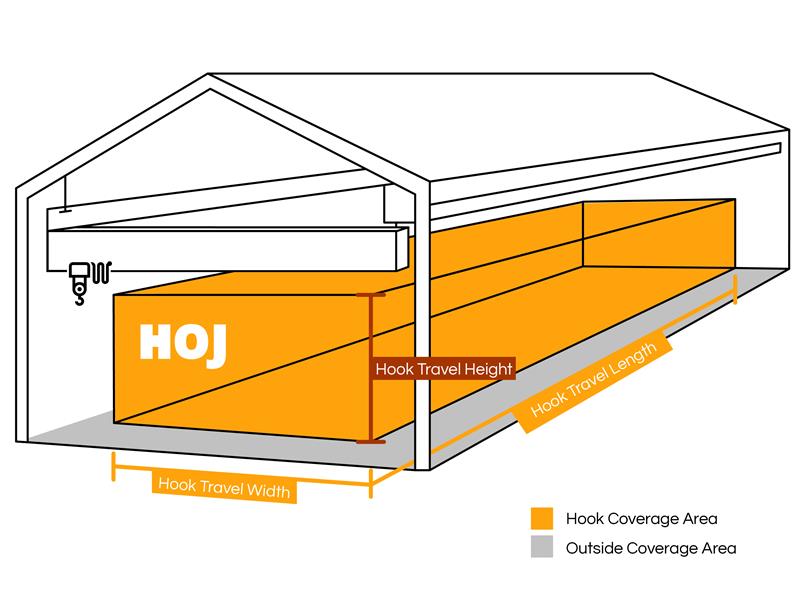Your Cart is Empty

What to Consider When Choosing a Crane
If you’re looking to improve the function of your warehouse, a crane can be a great solution. That said, there are so many types of cranes such as bridge cranes, gantry cranes, workstation cranes, jib cranes, an many more. You’ll want to be sure of which will give you the best results. To know what to consider when choosing a crane, let’s start with the basics.
A crane is a machine that can be used to easily lift and move materials and to improve your material handling abilities. In general, cranes are equipped with a hoist rope, wire ropes, a hook, a trolley, a bridge and controls. For a deep dive on what an overhead crane is, Mazzella Companies has a great explanation video. They say that cranes improve efficiency and safety in your material handling, and we strongly agree.
With the basics out of the way, let’s look at what considerations must be made. Ask yourself some questions like, “How much weight do we need to move around on a daily basis? What is the maximum? How much space do we have for the crane? What are we using the crane for?” Asking these types of questions will help you determine what type of crane you need.
As a guide in this process, refer to the crane service classes established by the Crane Manufacturers Association of America (CMAA) listed below. These classifications are based on the crane’s number of lift cycles and its average load intensity. It is important to choose the right crane classification to ensure safety and longevity of the crane solution.
Our experts at HOJ have years of helping businesses determine these parameters of crane selection, so don’t hesitate to reach out with your questions.
CMAA CRANE CLASSIFICATIONS
– Class A (Standby or Infrequent Service) – Includes cranes that are used at slow speeds for precise operations, such as installation and maintenance. These cranes have long periods of idle time between lifts and maximum capacity lifts may be required for installation and infrequent maintenance.
A few examples of these cranes would include transformer stations, installation and maintenance cranes in turbine rooms and public utilities.
– Class B (Light Service) – Includes cranes where the speed is slow and service requirements are light. Loads will vary from no load at all to occasional full capacity. Duty cycle is two to five lifts per hour, at an average of 10 feet per lift.
Some examples would include repair shops, light warehouse and light assembly operations are a few examples of light service use.
– Class C (Moderate Service) – Cranes mostly fall into this service class. Cranes that are generally handling loads that average fifty percent of the rated capacity. These cranes have duty cycles of 5 to 10 lifts per hour, averaging 15 feet per lift. Not over 50 percent of the lifts are at rated capacity.
A few examples of where these cranes would be used include machine shops, fabrication and metalworking shops and assembly shops are a few examples of moderate service class.

– Class D (Heavy Service) – Includes cranes that are used in heavy service applications. Loads at fifty percent of the rated capacity are handled constantly during the crane’s working period. In general, high speeds are desired and the duty cycle is 10 to 20 lifts per hour, averaging 15 feet per lift. Not over 65 percent of the lifts are at rated capacity.
Some examples of these include foundries, steel warehouses, heavy machine shops and lumber mills often fall in the heavy services class.
– Class E (Severe Service) – Includes cranes that handle loads that approach the rated capacity throughout the crane’s lifetime. The duty cycle is 20 or more lifts per hour at or near rated capacity, at any height per lift. Maintenance for these cranes is more frequent. Cement plants, scrap yards, lumber mills and container handling are common.
– Class F (Continuous Severe Service) – Includes cranes that are capable of handling loads that approach the rated capacity continuously and under severe service conditions throughout the lifetime of the crane. These are cranes with the highest reliability and maintenance frequency. These cranes are engineered-to-order, custom designed cranes that perform a specific function constantly.
These are just some of the variables to consider when purchasing a crane. Deciding which crane is right for a specific purpose can be an overwhelming task. Send us a note and we can help you ensure you are considering the right aspects and help you create a short list of cranes to select from.








